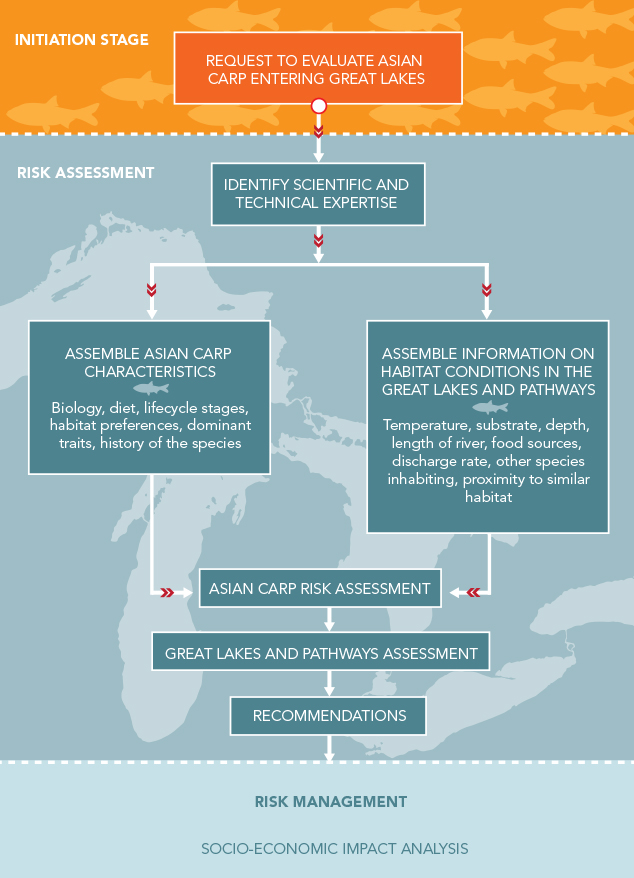The objective of a risk assessment is to evaluate, order, and structure incomplete knowledge so as to allow decisions to be made with as complete an understanding as possible of the current state of knowledge, its limitations, and its implications – Morgan, 1978.
When dealing with the likelihood of an Aquatic Invasive Species (AIS) introduction, the assessment estimates the probabilities of arrival, survival, establishment, and spread. One of the main components of the risk assessment is to determine the magnitude of the ecological impacts that would result from the invading species entering a particular pathway, or in this case, Asian carps entering the Great Lakes. In order for an assessment to be accurate, it uses both qualitative (descriptions) and quantitative (numbers) information in an organized way to rank the likelihood and magnitude of risk. It is also important for the assessment to provide risk managers with recommendations and mitigation measures to reduce the risk.
